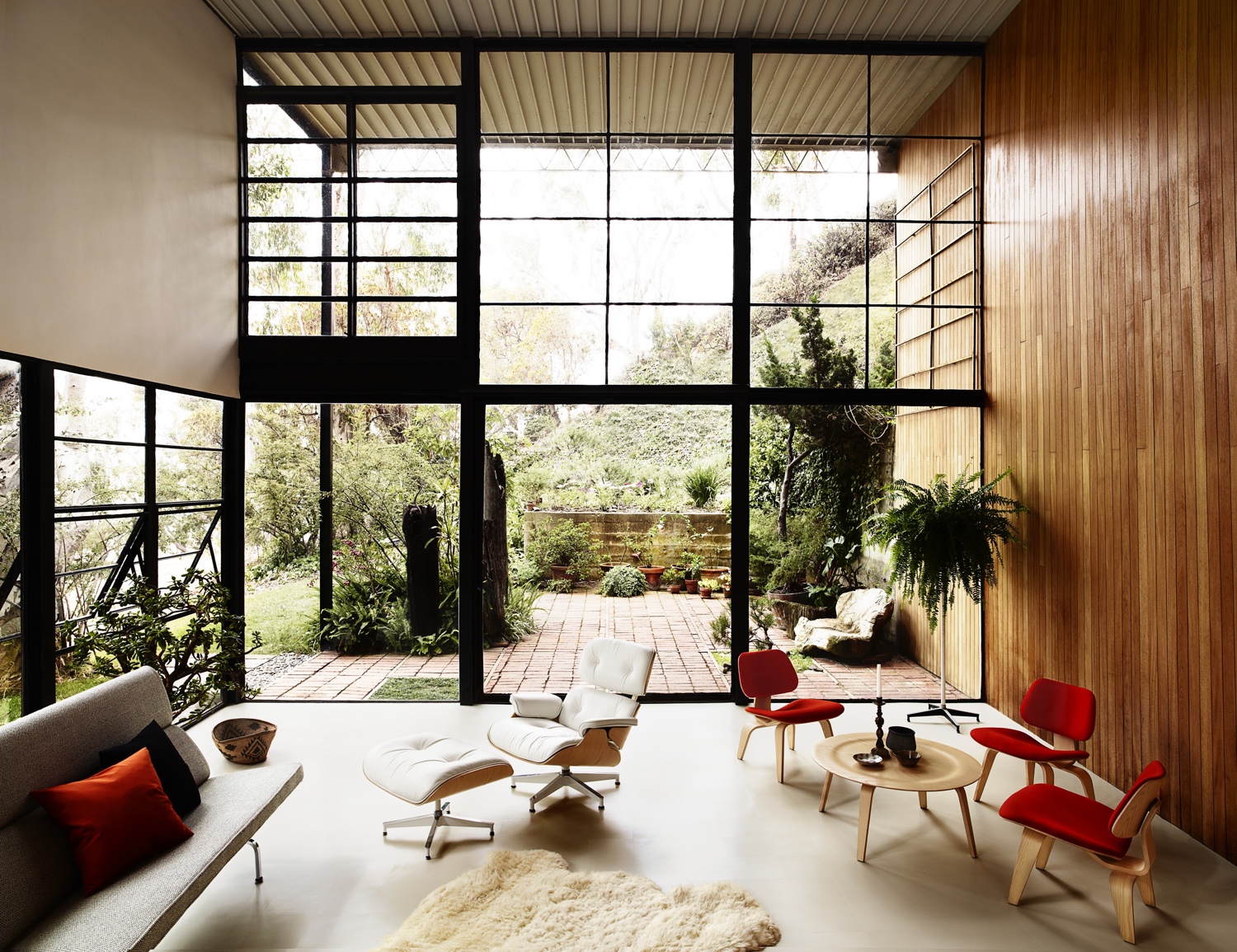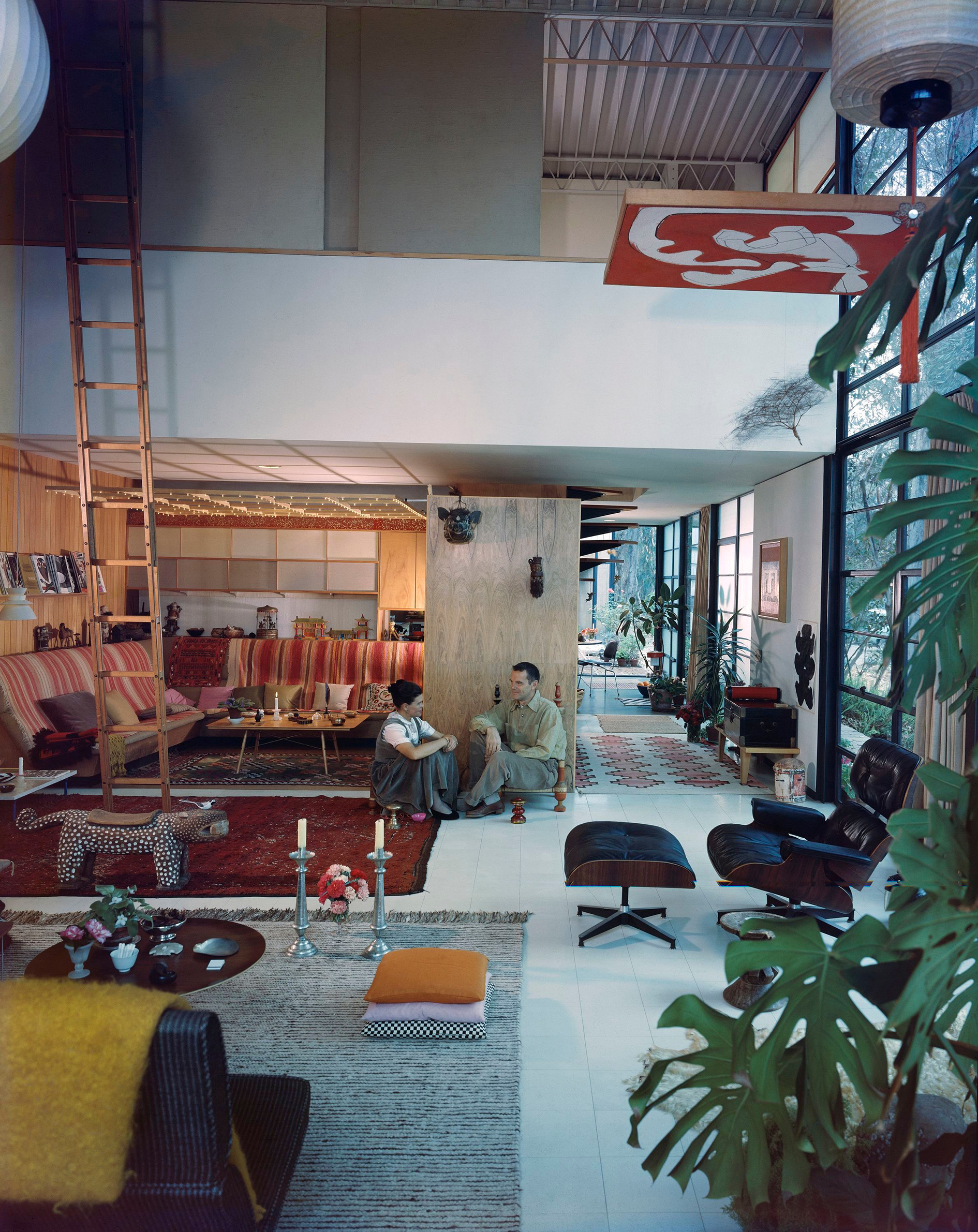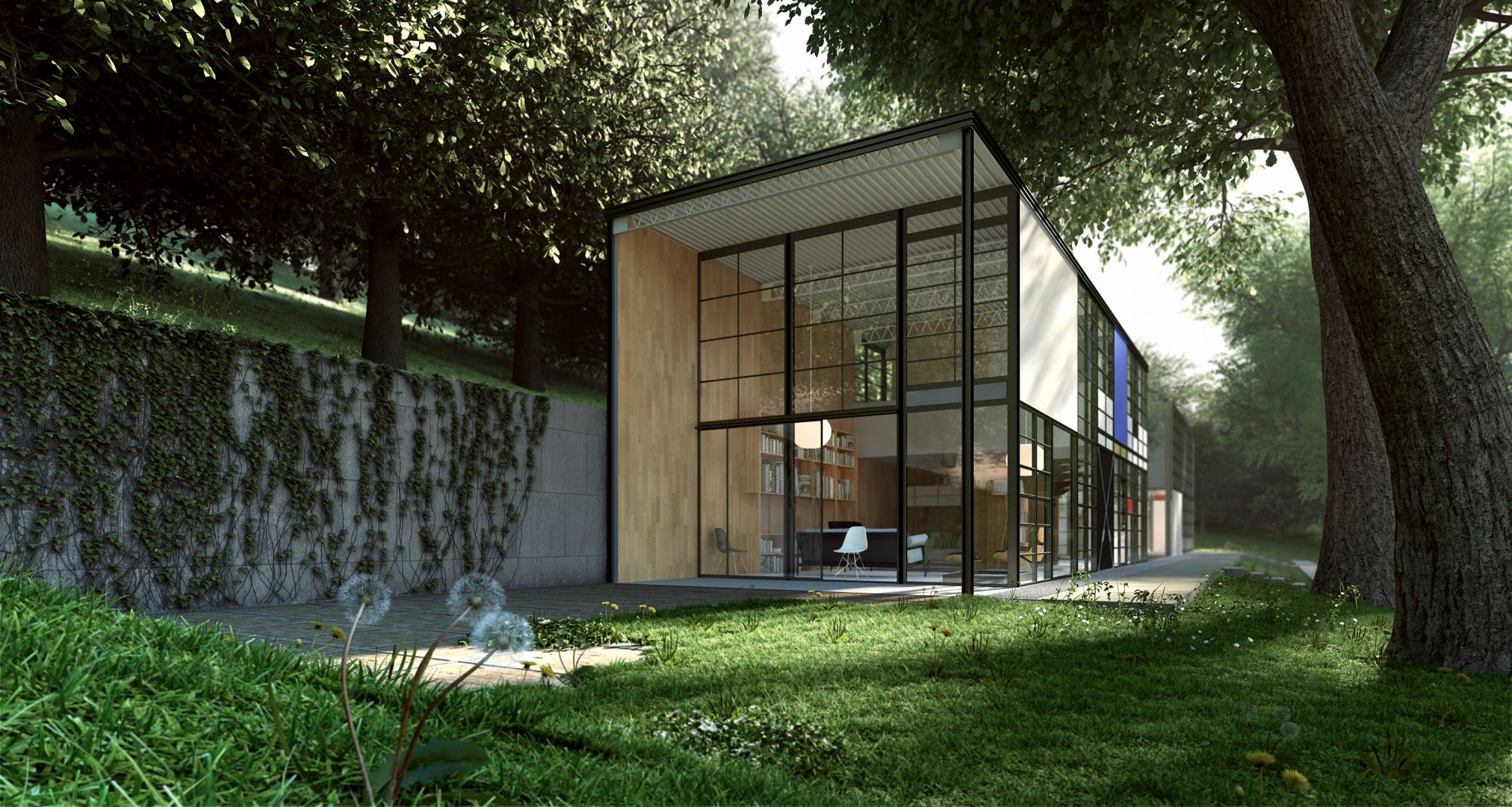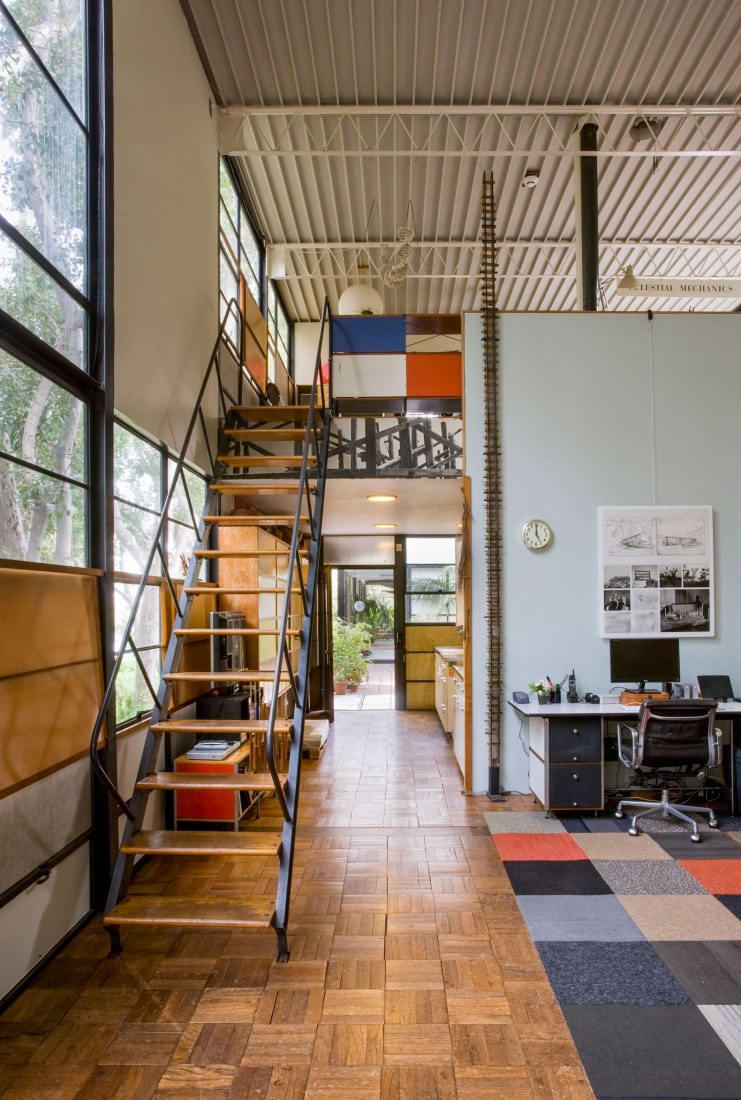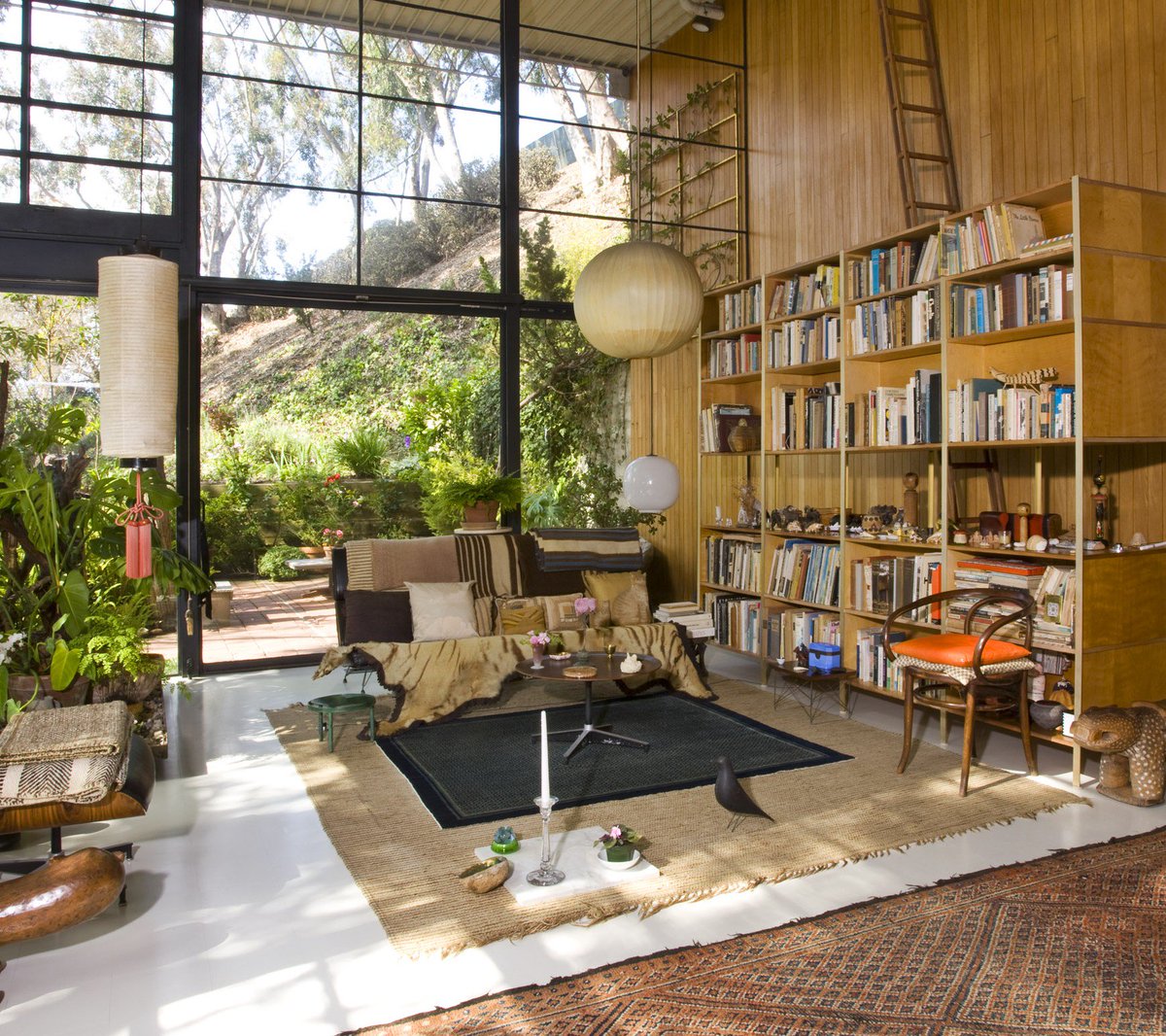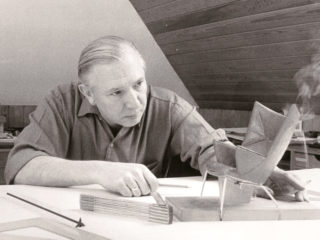The Eames House
The Eames House was initially born as a response to the appeal of the Arts & Architecture magazine which in 1945 launched a challenge with its “Case Study House Project”: to imagine homes suitable for the post-war lifestyle. Other architects and designers such as Richard Neutra or Eero Saarinen proposed their plans. The Eames porposal was then called Bridge House. It was published as Case Study House #8. They wanted to respond to the needs of a couple who lived and worked together. And together Ray and Charles Eames always worked, drawing on each other’s inclinations and abilities, often even using their own language in which Ray’s sentences were completed by Charles or vice versa, convinced as they were that the ability to connect and collaborating with other individuals with the same mindset and the same goals bring freshness, creativity and new resources into the work.
In fact, the Eames also often collaborated with other innovators such as the inventor of the geodesic dome Buckminster Fuller, the designer Alexander Girard or the photographer Alex Funke, and to greatly influence not only design, but ways of life. Their philosophy and working method can in fact be summarized by some quotes used by the Henry Ford Museum of American Innovation, which dedicated a major traveling exhibition to the Eames that debuted last May at the museum’s headquarters in Michigan.
For the Eames, in fact, design could not and should never be an exercise based in style. Instead, it had to offer concrete solutions to problems: the premise of what we now call “design thinking” and also apply to other fields: “design is a method of action. We must always consider the working method to solve problems rather than the physical appearance of the result. Good design is the expression of a solved problem “. Their method was to start from “a pure place” like passion (“always and only work on things you believe in”), seek help in collaborating with others, pay great attention to the initial stages of preparation so as to allow a high level improvisation in the creative phase and, above all, considering multiple solutions by observing the problem from different angles: that is iteration. Repeat, repeat and then repeat process and solutions again until you are sure that you have arrived at the best one, as happened in 1940 when they were faced with the challenge of serially producing preformed curved plywood shells for the MoMa chairs, and that in later it was also used for fiberglass models.
The Eames House in Los Angeles that can be visited, today did not completely follow the indications of the Bridge House, which involved a construction “on stilts” on the ocean. The foundations were instead laid parallel to the hillside with a concrete retaining wall almost 100 meters long. The structure consists of two parallelepipeds of steel two floors high, connected by a courtyard with a brick floor and potted plants. On the exterior facade of the house, which has large floor-to-ceiling windows that create a fluid connection between interior and exterior, red, blue and gold panels stand out. The building that housed the studio today is the headquarters of the Eames Foundation, which together with the GettyConservation Institute is dedicating enormous resources to preserving the home for future generations (“The 250 Year Project”), researching the most suitable materials for necessary repairs without losing sight of the goal of keeping the house in the conditions in which the owners lived: not an easy undertaking because only industrial materials were used for both buildings, many of which no longer in production.
An example for all: the slightly curved railing that completes the spiral ladder leading to the second floor of the house was found by Ray in a catalog of ships! But the effort of the foundation is evident even in the smallest details: both the house and the Eames’ studio house the collections of objects, carpets and folk art that Ray and Charles loved to buy during their travels, and the vases are still filled with flowers and Ray’s favorite plants.


